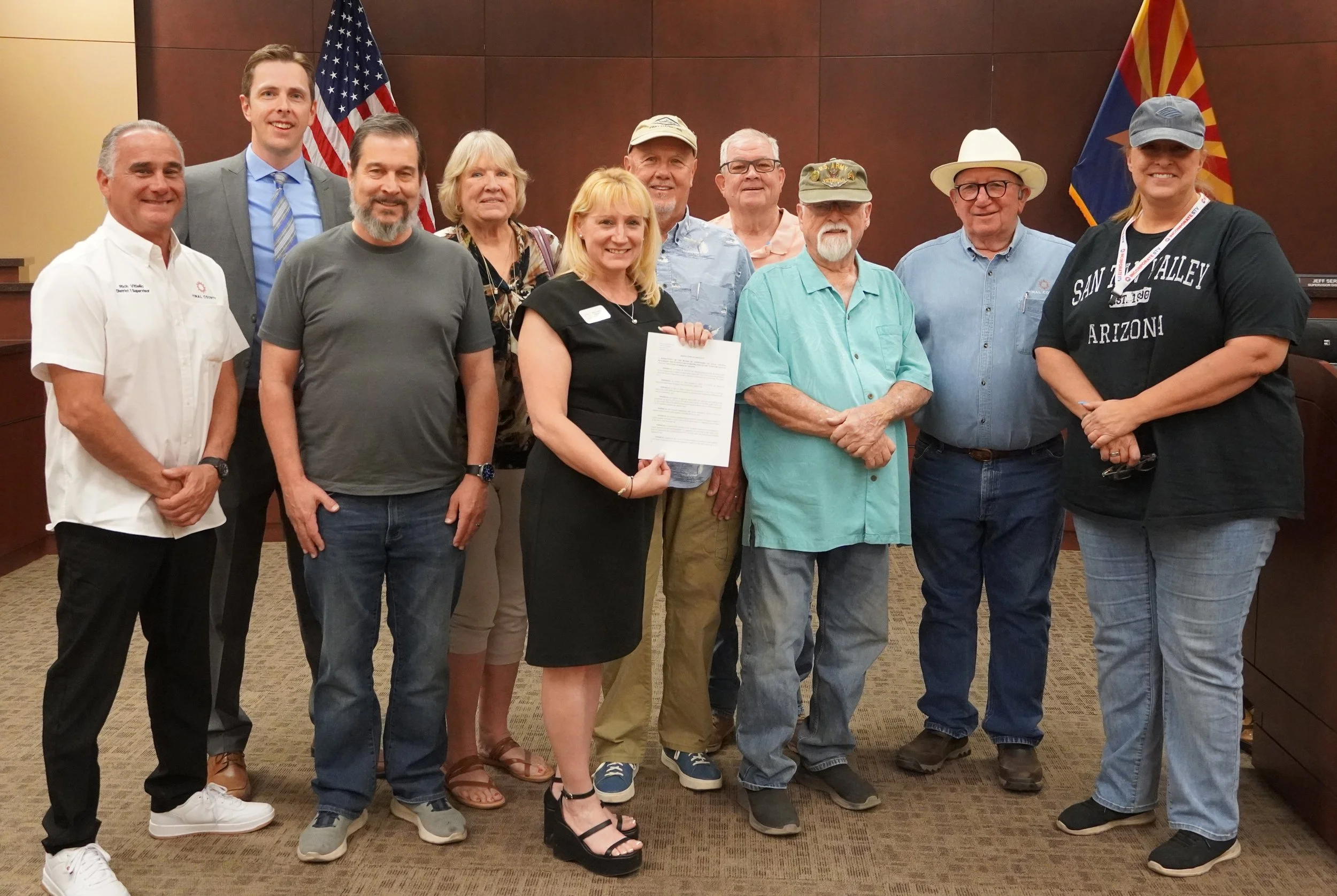In Phoenix’s Southeast Valley, a Long-Unincorporated Community May Finally Become a Town
A Community of 100,000 Faces a Defining Choice at the Ballot Box
In the vast sweep of Pinal County’s southeast corner, where suburban developments edge up against farm fields and mountain foothills, more than 100,000 residents live in one of the largest unincorporated communities in the American Southwest. For decades, San Tan Valley has expanded in size and evolved in its needs. A vote scheduled for August 5 will determine whether San Tan Valley incorporates as an official municipality—a move that would grant the community formal political status, a local government, and the power to chart its own course on development, infrastructure, and identity.
The push for incorporation is being led by the Committee for the Incorporation of San Tan Valley, a grassroots organization made up of residents, small business owners, and community advocates. While Pinal County has not taken a formal stance, incorporation could ease the burden on county services stretched thin by rapid population growth. For many, the proposal is long overdue. “We’re tired of being a bunch of zip codes, being a bunch of homes,” said Tyler Hudgins, a lifelong resident and chair of the committee “We want to be a community… we want to have proper representation.”
Queen Creek, which stands to lose future annexation potential if the measure passes, has remained publicly neutral, though it has in the past taken a proactive approach to growing its borders. The outcome of the vote may indirectly impact Queen Creek’s long-term development strategy and political footprint in the region.
Yet the measure is hardly without controversy. Critics fear higher taxes, unnecessary bureaucracy, and uncertain outcomes for public services that currently fall under Pinal County jurisdiction. Still others question whether the area—now a quilt of master-planned communities, rural lots, and commercial clusters—has the cohesion or infrastructure to sustain a town government.
San Tan Valley, a community without a center, occupies a curious space on Arizona’s geographic and political map. It has no mayor, no town hall, no city council. It is governed by county supervisors whose district offices lie nearly an hour’s drive away in Florence. The area’s name itself only came into official use in 2009, the result of a community effort to give the sprawling residential region a unified identity. The population, however, has grown steadily over the past two decades, fueled by affordable housing and a location on the fringe of the fast-growing Phoenix metropolitan area.
Today, the community rivals many Arizona cities in size but lacks the formal powers of municipal government. By contrast, neighboring Queen Creek incorporated in 1989. Since then, it has annexed land along its southern and eastern edges—at times pulling in territory that residents assumed belonged to San Tan Valley. These annexations, including key areas around Banner Ironwood Medical Center, have deepened tensions and sparked periodic efforts to incorporate.
“This isn’t just about governance,” said Kayla Roberts, a resident raising two children in the area. “It’s about having a say in what happens where we live.” The Stakes of Incorporation If the measure passes, San Tan Valley would gain the authority to manage zoning, approve development, negotiate service contracts, and apply for state and federal grants. Local advocates point to the potential for more responsive road maintenance, expanded parks and recreation services, and more consistent planning standards. “There’s not enough retail. There’s not enough business… that supports another 200,000 people,” said Jeanne Stockton, a longtime resident and supporter of the measure. “That doesn’t get fixed from Florence.” Supporters also argue that the time is right to assert local control before further annexation or outside decisions reshape the area without residents’ consent.
Pinal County Board of Supervisors Recorder Dana Lewis is pictured with the Supervisors and members of the Committee for the Incorporation of San Tan Valley. At a special session on May 2nd, 2025, the Board of Supervisors unanimously approved an August 5 election to decide whether to incorporate San Tan Valley.
But the proposal has met with skepticism from some residents and business owners. The most common concern is financial: Would incorporation bring new taxes? How would the town fund its operations? “I think the people need to know what it’s going to cost them,” said Jerry Pierce, a resident who attended a recent open house hosted by the incorporation committee. Others raise questions about existing problems that a new town might not be able to solve. “San Tan Valley traffic is just as bad if not worse than Queen Creek,” wrote one resident on a community Facebook page,“Pinal County’s infrastructure sucks.” There are concerns, too, about whether a newly formed government would have the experience or resources to manage contracts for water, law enforcement, and other essential services that are currently handled at the county level or through private agreements.
A Defining Moment Whether or not San Tan Valley incorporates, the community is at a turning point. Growth will continue. More homes will be built. More residents will move in. The question now is whether future decisions about roads, zoning, and identity will be made by local representatives—or from afar. “It’s about being seen,” Hudgins said. “It’s about being heard.”
For those who live in the Southeast Valley—whether they are homeowners, renters, or business owners—the outcome of the August 5 vote will shape the next chapter of life in one of Arizona’s fastest-growing regions.



